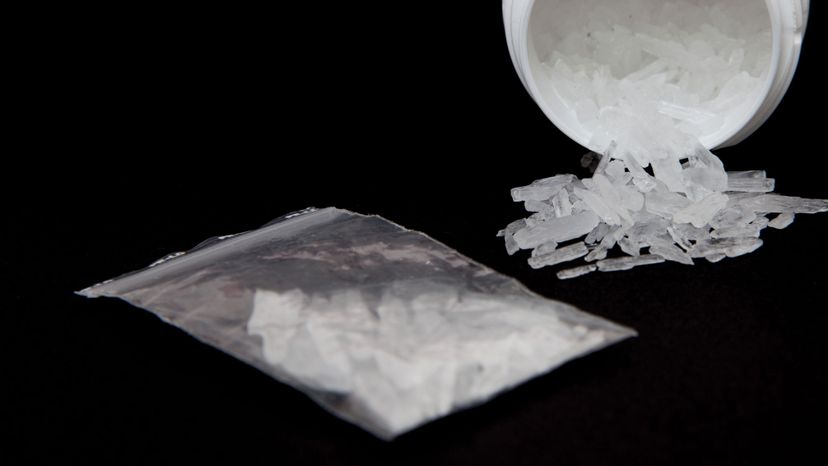Meth Production: The Need for Changing Speed

In the 1970s, the hippie scene turned ugly as more and more members of the counterculture started popping uppers and shooting up speed. Motorcycle gangs such as the Hell's Angels were notorious for producing amphetamines using a chemical normally used to clean swimming pools: phenyl-2-propanone, or P2P.
In 1980, P2P was placed under federal control. The reasoning was that the elimination on the street of this precursor chemical necessary for amphetamine production would bring the trade in illegal speed to its jittery knees. The problem — or, depending on your point of view, the solution — emerged pretty quickly, as most do in the world of high-flying speed cooks who have nothing but time and nervous energy to find new ways to cook up crank.
Advertisement
It was discovered that speed could be made using readily available ephedrine. However, this discovery came with a surprise — this speed wasn't amphetamine, it was methamphetamine, and it was twice as strong as its P2P-derived ancestor.
Two Mexican brothers, Jesus and Luis Amezcua, decided to make a career change in the late 1980s. Instead of continuing down the path as small-time cocaine runners, they began importing pure ephedrine from the overseas laboratories that produced it. The audacity of this scheme ensured that it was overlooked as a way to obtain the needed ingredients for meth. By the mid-1990s, the Amezcuas were responsible for about 80 percent of the meth on America's streets [source: DEA]. The abundance of the product resulted in a very pure form of meth, bringing about a surge of crime, emergency-room visits, drug-related child abuse, and court-ordered and voluntary drug rehabilitation stays.
The Amezcuas covered their tracks by never shipping any of the ephedrine into or through the United States. Instead, they would ship it from a point of origin such as India into Mexico, and then divide the large shipment into smaller quantities that could be transported to various laboratories in Mexico and America. A shipment of 3.4 metric tons (3.7 tons) of ephedrine was rerouted by a European shipping agent through America on its way to Mexico City and discovered by U.S. Customs agents. After realizing the extent of this operation, American authorities reached out to the nations with laboratories producing ephedrine to persuade them to adopt tighter export controls and standards. This change made a difference, but only for a while, because when it comes to meth, where there's always a workaround.
In 1998, the brothers were arrested and as of 2018, they are still serving prison sentences [source: Dillon].